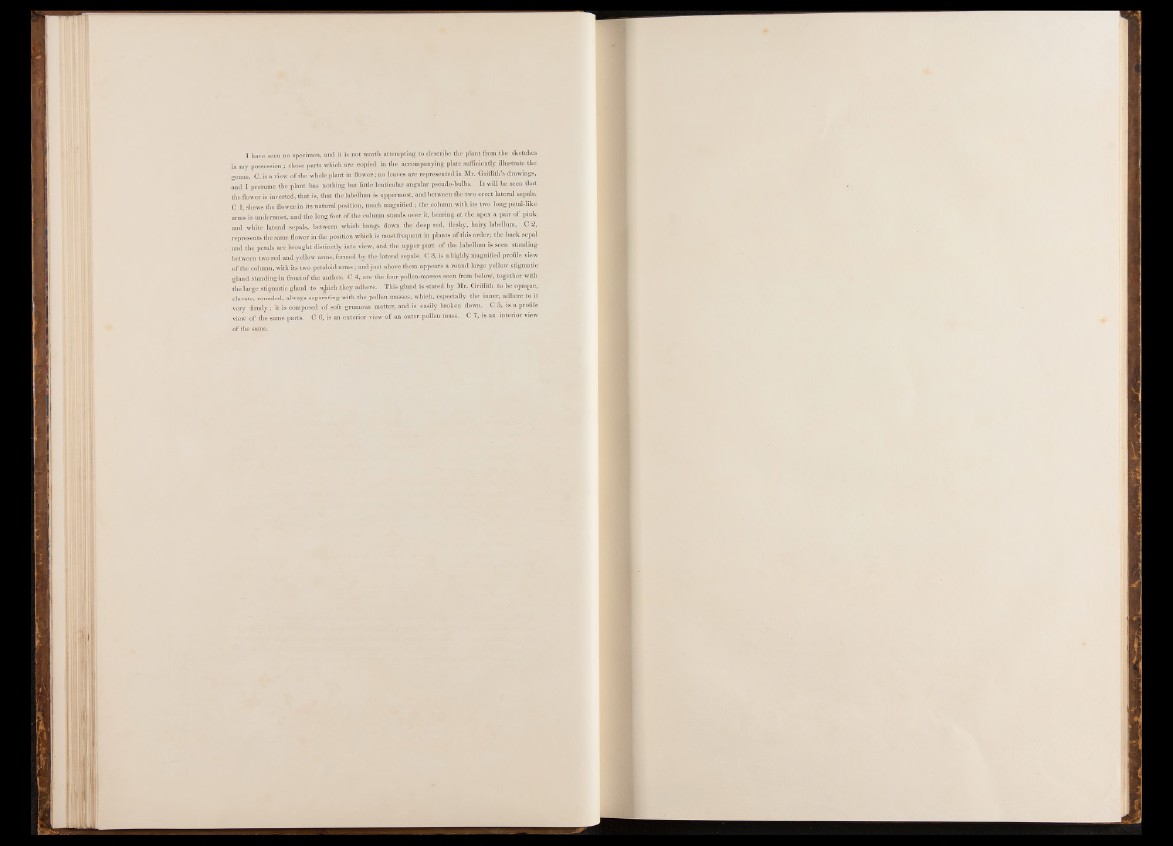
I have seen no specimen, and it is not worth attempting to describe the plant, from .the sketches
in my possession; those parts which are copied in the accompanying plate sufficiently illustrate, .the
genus. C. is a view of the whole plant in flower; no leaves are represented,in Mr. Griffith’s drawings,
and I presume, the plant has nothing but little lenticular angular pseudo-bulbs. It will be. seen that
the flower is inverted, that is, that the labellum is uppermost, and between the two erect lateral sepals.
C 1, shews the flower in its natural position, much magnified ; the, column with its two long petal-like
arms is undermost, and the long foot of the column stands over it, bearing at the apex a pair of pink
and white lateral sepals, between which hangs down the deep red, fleshy, hairy labellum. C 2,
represents the same flower in the position which is most frequent in plants of this order; the back sepal
. .and the petals are brought distinctly into view, and the upper part of the labellum is.seen standing
between two red and yellow arms, formed by the lateral sepals. C 3, is a highly magnified profile view
of the column, with its two petaloid arms; and just above them appears a round large yellow stigmatic
gland standing in front of the anther. C 4, are the four pollen-masses seen from below,together with
the large stigmatic gland to which they adhere. This gland is stated by Mr. Griffith to be opaque,
clavate, rounded, always separating with the pollen masses, which, especially the inner, adhere to it
very firmly; it is composed of soft grumous matter, and is easily broken down. C 5, is a profile
view of the same parts. C 6, is an exterior view of an outer pollen mass. C 7, is an interior view
of the same.